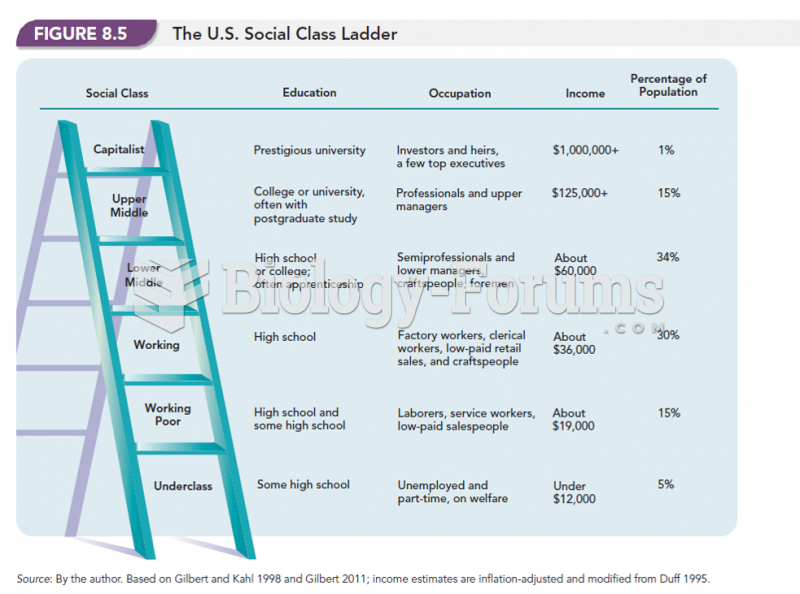Answer to Question 1
Women between the ages of 15 and 24 constitute about 40 of the total population of women of childbearing age-yet they account for roughly 70 of births outside of marriage. More than a million teenage women become pregnant each year. Most of these pregnancies are unplanned and unwanted and result from misinformation or lack of access to birth control. Some parents still feel disgraced if their daughter becomes pregnant. Some single pregnant women (and their parents) view it as a problem because difficult decisions need to be made about whether to end the pregnancy. If it is decided not to have an abortion, decisions need to be made about adoption, continued education or employment, a possible marriage, living arrangements, and perhaps welfare assistance. Some people see birth outside of marriage as a social problem-a sign of a breakdown in the traditional family and a symptom of moral decay. Others assert that it is a problem mainly because the great majority of these children are born to women who are simply not yet prepared-by experience, education, or maturity-to be a parent or to provide for a family financially. Authorities who view birth outside of marriage as a problem for this reason are concerned about the effects on the child of being raised by a mother who is in many ways merely an older child herself. They are also concerned about the effects on the mother of trying to maintain a one-parent family with limited financial and personal resources. Finally, some authorities view birth outside of marriage as a problem because of the high cost to society of having to make welfare payments to large numbers of single-parent families.
The social stigma attached to birth outside of marriage is certainly not to either the child or the mother. On the other hand, some authorities have argued that the stigma is functional to society because it discourages births outside of marriage and thereby helps perpetuate the nuclear family, which provides a structure for the financial support and socialization of children. In response to this view, it can be argued that this punitive approach may not be the optimal way to reduce the incidence of births outside of marriage. The Sex Information and Education Council of the United States (SIECUS) asserts that a more effective approach would involve quality educational programs about responsible sexuality.
Answer to Question 2
Incest is defined as sexual relations between blood relatives. Typically, the definition is extended to include sex between certain nonblood relatives, such as between a stepparent and a child.
It has been long known that people frequently use sexual behavior to achieve nonsexual rewards. Adults who are threatened by and fearful of the rejection of other adults often turn for reassurance to children, who are nonthreatening and generally unconditionally loving. This need for acceptance can lead to the adult's initiating sexual behavior (especially if the adult had been sexually abused as a child, as is often the case) because many people view sexual behavior as the ultimate acceptance and ego validation. Most child molesters intend no harm to their victims; they are psychologically needy people who use children in their own battle for emotional survival.
It is important to bear in mind that incest is a symptom of a disturbed family system. Blair and Rita Justice have studied the consequences of incest at three different points in time: while the incest is going on, when the incest is discovered, and years after its occurrence.
While the incest is occurring: A daughter who has sex with her father often gains special power over him; she controls a very important secret. Role confusion often occurs. The daughter is still a child, but at times she is a lover and an equal to her father. Victims are deprived of the opportunity to explore and discover their sexuality by themselves or with a peer partner of their choice. Instead, this normal sexual development is violated by an adult imposing his exploitative behavior. The mother may become both a parent and a rival to her daughter. Siblings may also become confused about who is in charge and how to relate to their sister who is receiving special privileges. Fathers in an incestuous family may become jealous and over possessive of their daughters.
When the incest is discovered: In a small number of cases, the incest is discovered when the daughter becomes pregnant. At times the incest is discovered by the mother, who then may try to stop it by reporting it to the police. Sometimes the mother discovers the incest but remains quiet. If the incest is reported to the police and criminal charges are filed against the father, the entire family is usually caught up in a traumatic, time-consuming, confusing, and costly legal process. When there is legal involvement, the daughter is often subjected to embarrassing and humiliating interrogation. Once she is recognized as a victim of incest, she may be approached sexually by other men who now view her as fair game. Often she is removed from the home to prevent further abuse. In addition, the mother and father suffer considerable embarrassment and humiliation.
Years after its occurrence: The long-term effects of incest vary from child to child. Younger children usually do not fully realize the significance of the sexual behavior and tend to suffer less guilt than adolescent victims. However, with young children there is always the danger that, as they grow older and learn about society's taboos against incest, they may start blaming themselves for having participated. Possible long-term effects on the daughter include low self-esteem, guilt, depression, and fear. The daughter may also become angry at both parents for not protecting her and at the father for exploiting her.
If the incest is ongoing and unreported and the victim is an older child, she may attempt to avoid the abuser by running away from home. If she flees, there is a strong possibility that she will become a prostitute to support herself. She is also likely to abuse drugs as a method of escaping the life situation she is trapped in. Some victims during their childhood years seek to deny or suppress the traumas associated with incest. When they become adults, they may experience difficulties in developing relationships with others.







